Editor’s note: Beth Reid is our Canadian blogger. Today’s game is Money War, Canadian style. For your non-Canadians, don’t worry. This game is totally applicable to you too. Enjoy!!
Let’s start this blog post with a mini-quiz. So, how much is this?
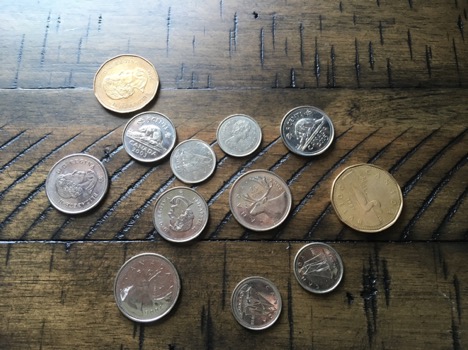
If you said $3.30, you’re doing better than the cashier at the grocery store that we visited earlier this week. And it’s likely that you’re not even Canadian!
I’m going to spare you the full story of our trip to the grocery store, but let’s just say that it started with the discovery of a stash of empty yogurt drink bottles and ended with two shamefaced little girls, an emptying of piggy banks, and a visit to the grocery store to buy our family a new pack of yogurt drinks. When we got to the checkout counter and they dumped their handfuls of change, worth $3.30, on the table, there was a slight pause.
Cashier: “Oh. You want to pay cash for that?”
Me: “…Yup.”
We stood there while he took 30 seconds to slowly count it out and came up with an erroneous $2.95.
I left that store with a newfound conviction: I need to make sure my kids are comfortable handling physical money. As our society becomes increasingly cashless, opportunities to see, touch, and count money are dwindling. But knowing how to count money and count change is still a crucial skill – not to mention that manipulating physical money helps your child to understand the value of it. Raise your children to become money-literate. Play money games this summer!
So – today I’m going to show you how to play Money War, game M4 in the Math Card Games book. This is a great game to play for a younger child who knows the value of different coins and who is just starting to add them together. If you have older kids who are ready for more, try Make 16 Cents, game M6, or Make the Amount, game M10, or check the Math Card Games book for more money game ideas.
Because we’re Canadian, we’ll be showing you the game using our Canadian money cards.
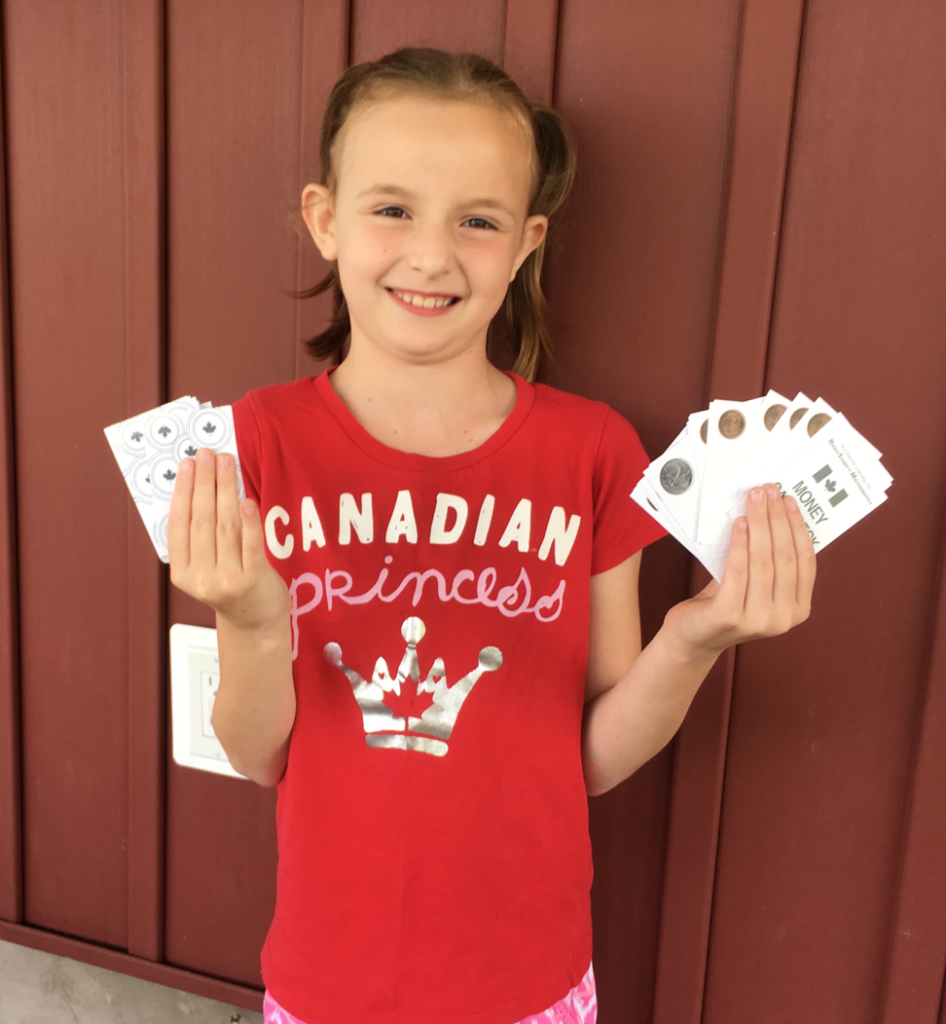
You probably know that RightStart has US money cards – but did you know that that we also offer Euro, Australian, and New Zealand money cards? Because each of the currencies have different coin values, playing the same game with different cards can make for some interesting games!
OK – that’s enough preamble. Let’s get down to playing! Grab your money card deck. Shuffle the cards, and deal out the whole card deck, distributing an equal number of cards to each player. Two or three players is a good number for this game.
Put on your game faces.
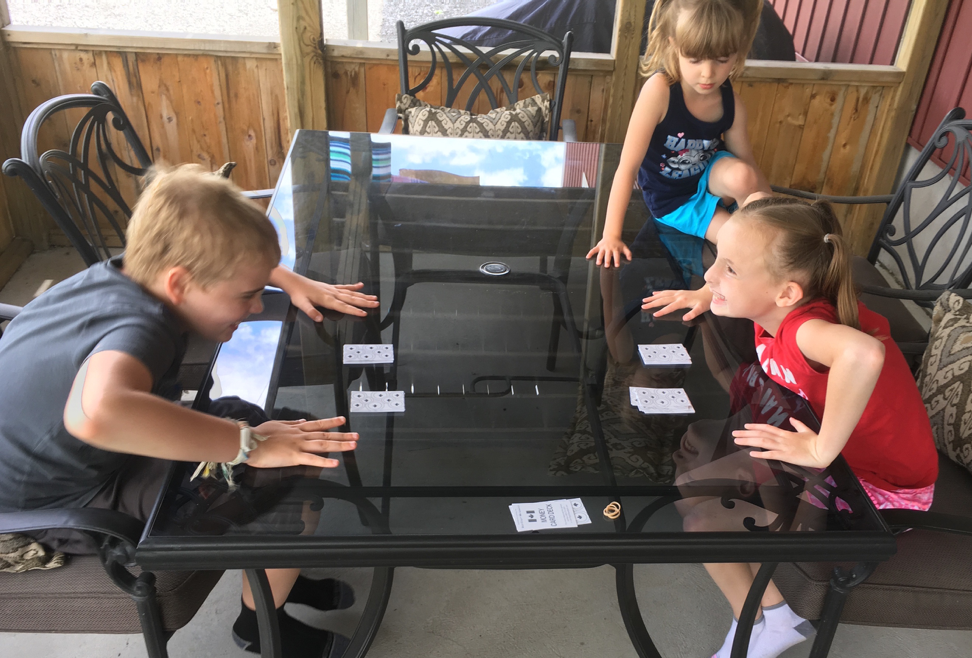
Once everyone has their card stacks, the game starts. All players simultaneously turn over our top two cards. In this house, our cards like to march out to battle before they reveal themselves.
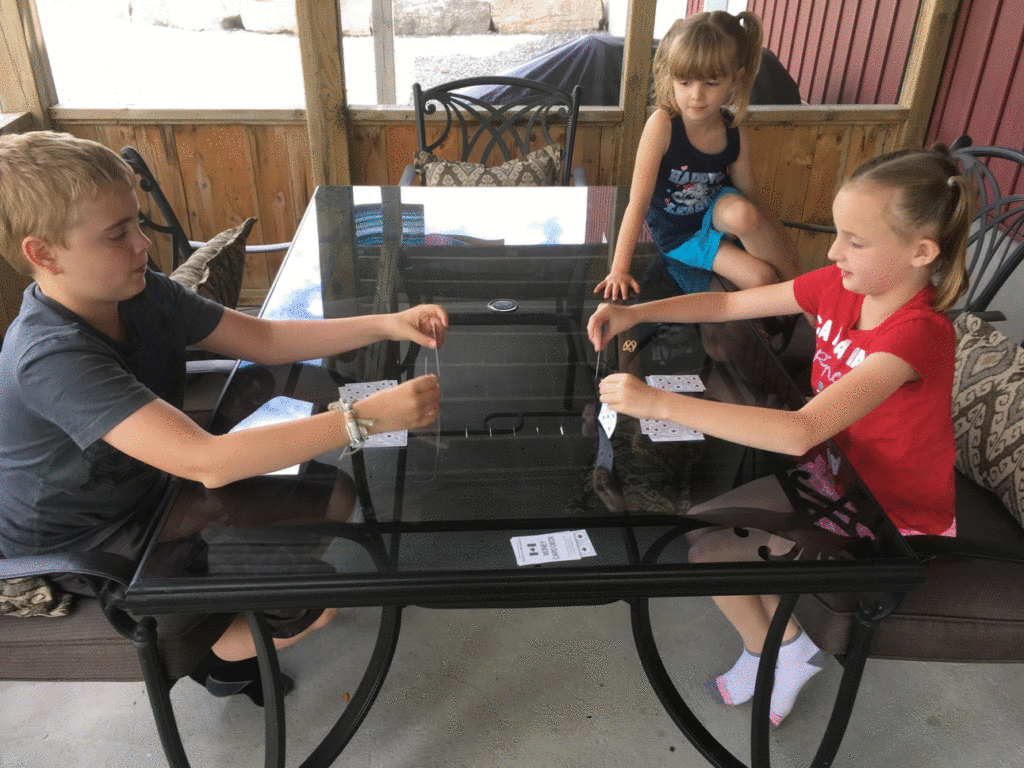
Each player announces the total of his two cards, and the player who has the most money takes all the cards and adds them to his victory pile.
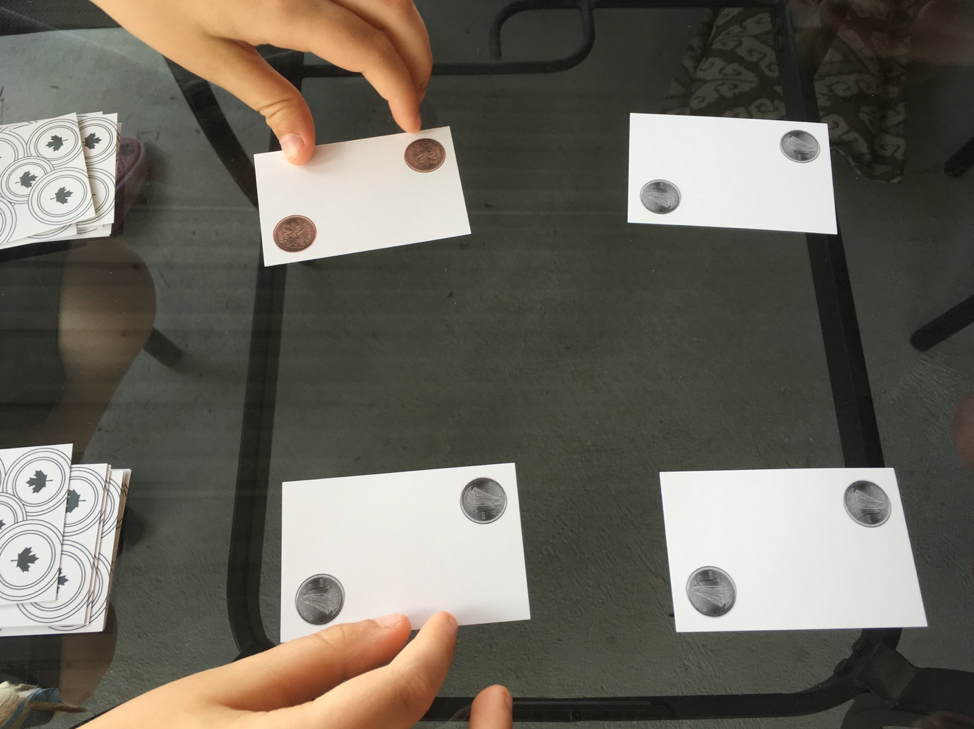
On our first round, Robbie lays down a dime and a penny, and Clara lays down two dimes. Robbie says “eleven cents”. Clara says “twenty cents”. Clara takes all the cards.
If both players set down the same amount, you have a war! One of two things can happen. Each player can send out another set of cards, and whoever has the new highest total now wins all 8 cards.
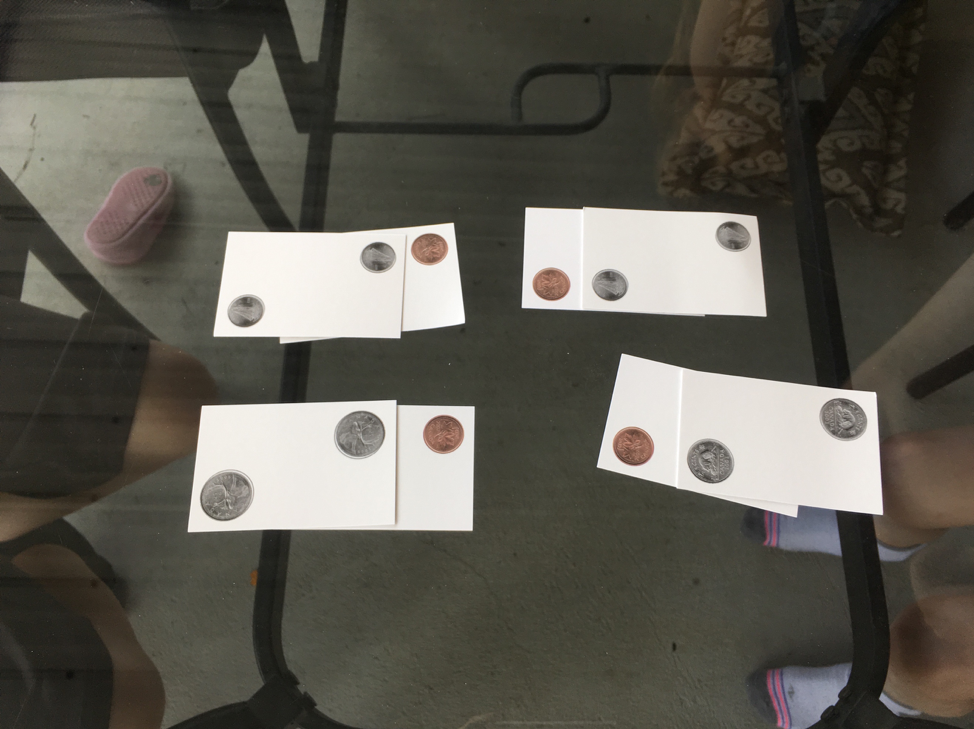
Or, you can raise the stakes and put a card face-down on each pile before sending out your second wave of soldiers. Now, whoever wins this round wins all 12 cards!
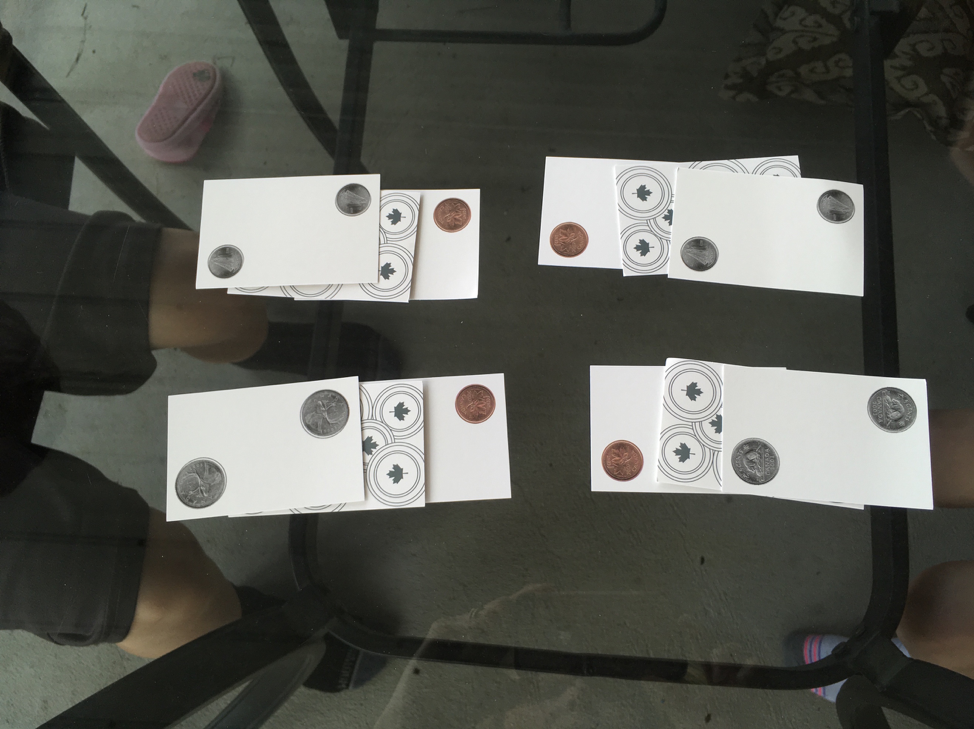
Keep playing until the draw stacks are depleted. Then compare the victory piles to see who won the game. Clara is the clear winner today!
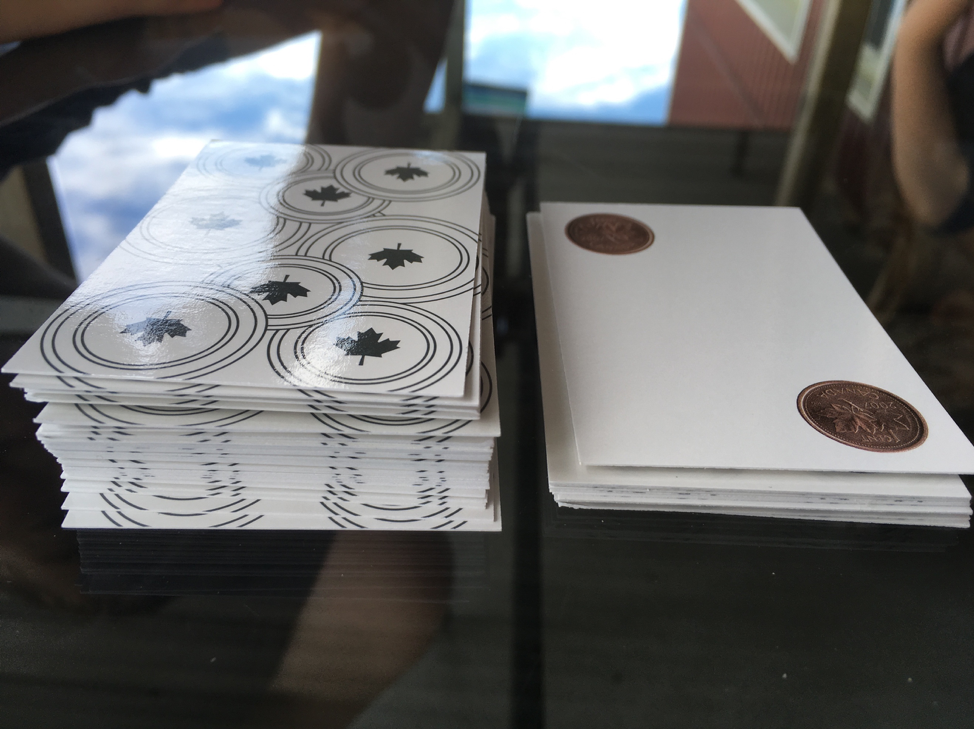
It’s been ten minutes, the game is over, and your children have each added 12 sets of coins together – and had fun doing it. Their brains are lighting up, their facility at mentally calculating coin amounts is growing bit by bit… and someday they will make fantastic cashiers!

Can you tell us how the Canadian coins add to $3.30 at the top?
I think I can see 2 dollars, 3 quarters, 2 10-cents and 5 5-cents, which would be $3.20. Where am I going wrong? (I even got out a ruler to compare the coins!) Thank you!
It’s been a while since we played Money War in our house, so maybe I’ll pull it out next week. Thanks!
Hi, Jacqui.
Thank you for your question. Here are the coins and the values:
2 dollars,
3 quarters,
4 dimes
and 3 nickels.
That’s $2 + $0.75 + $0.40 + $0.15 – which gives us $3.30.
I hope that helps! If you have any further questions or comments please feel free to post them here or email RightStart Math directly at [email protected].
Have a great summer!
Rachel